
Both members of the mint family and Lamium genus, henbit (Lamium amplexicaule) and dead nettle (Lamium purpureum) are common finds on winter walks and spring hikes. They have a similar appearance, but as you look closer, there are certain features that will help you tell them apart. Both have long been valued as wild edibles, but how do you differentiate between them when foraging?
As members of the same genus, each has shared similar colloquial names over the last few centuries. Henbit is often known as henbit deadnettle. And dead nettle is often referred to as red dead nettle, purple archangel, or purple dead nettle.

Discover the similar characteristics of these two common ‘weeds’ and how to differentiate between them — from habitat to flower shape.
Similar features and botanical differences
With their square stems, similar leaf structures, flowers, and height henbit and dead nettle look very similar at first glance. However, there are certain characteristics to look out for which can help you tell them apart.
The flowers:
After a period of dormancy through the winter, both henbit and dead nettles flower very early in the spring. Each has small, dense clusters of long pink/purple flowers.
Henbit flowers tend to be noticeably longer at roughly 20mm, whereas dead nettle flowers are slightly more compact at 10-15mm. The flowers are also shaped slightly differently, with a hooded shape on dead nettle flowers, and a more erect, open shape on henbit.

The narrower henbit flowers will also usually have several noticeable dark spots. These are present on dead nettle too, but they’re slightly more subtle as dead nettle flowers are often a darker shade of purple.
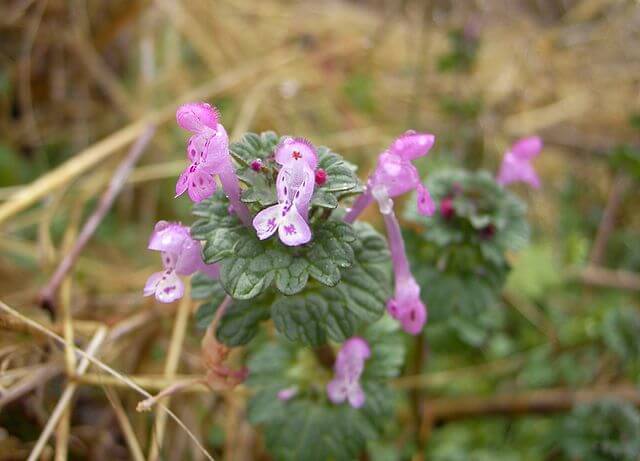
The leaves:
Henbit has scalloped, heart-shaped leaves, whereas dead nettle has more pointed, arrow-shaped leaves with serrated edges. They both have a rich green color, however dead nettle leaves can often be tinted with red where the leaf joins the stem. New leaves on dead nettle are also often deep red/purple in color.

Lower henbit leaves will have a petiole (stalk), whereas the upper leaves will have no stalk. Dead nettles always have a short petiole so this can be a useful distinguishing feature.
White henbit/nettle
Both plants have a lookalike known as white henbit (Lamium alba), also often known as white dead nettle. Botanically, it is most similar to dead nettle, apart from the white-colored petals.

Poisonous lookalikes of henbit and dead nettle
Accidentally foraging henbit or dead nettle in place of the other is not a danger as both plants are wild edibles. However, there are other lookalikes to be aware of. The young shoots of foxglove are highly poisonous and can look similar to young henbit or dead nettle. Stinging nettle is a dead nettle lookalike, which is edible only after careful foraging and preparation. Make sure to always follow foraging basics and also safe foraging guidelines.
They’re both wild edibles
Young henbit shoots, flowers, and leaves are edible. They have a mild, slightly peppered flavor and can replace leafy vegetables like lambs quarters or spinach. They can be used in endless recipes, from homemade pesto and soups to salads or stir fry.
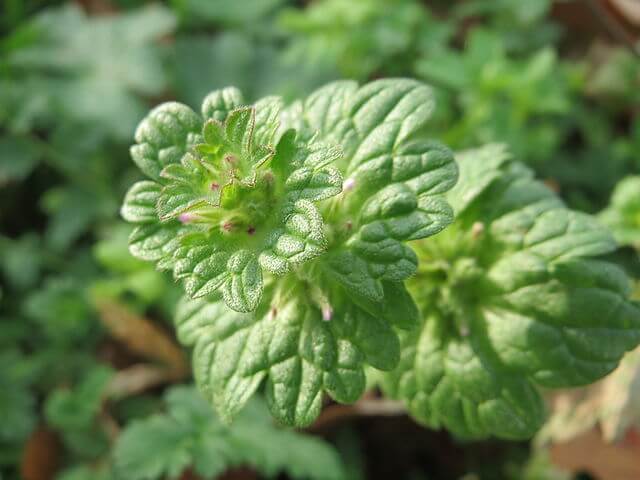
Dead nettle can again replace leafy green vegetables or herbs in many recipes. The dead nettle flavor is thought to be milder with a fresh, slightly spinach-like taste.
Medicinal value
Like other members of the mint family, henbit and dead nettle are both greatly valued for their medicinal properties. Full of nutrition, the health benefits of henbit and dead nettle make them an excellent wild food source.
Similar habitats and lifecycles
As members of the same genus, henbit, and dead nettle have similarities in appearance but also habitat and lifecycle. They favor woodland clearings, meadows, and the edges of roads, gardens, and hedges. And, as winter annuals, they begin growing in the autumn from seeds that were set in early summer. After over-wintering as a small rosette of leaves, they flourish in late winter and early spring with their colorful flowers. In mild winters they’ll flower earlier, and in colder regions, they may flower later.
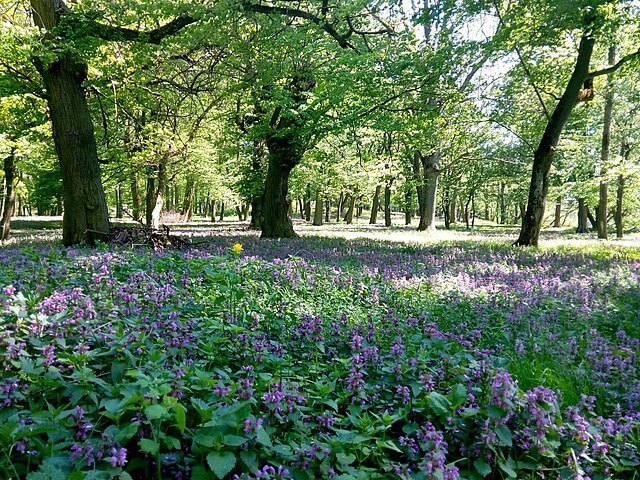
Henbit and dead nettle are native to Europe, Asia, and Northern Africa. However, because of their ability to grow quickly as hardy annuals, they are now widely naturalized in the US and Australia.
They’re both crucial for early spring pollinators
Like all wild plants, both henbit and dead nettle play a vital role in ecosystems as a crucial early spring food source for pollinators. As bees emerge, looking to replenish their depleted winter stores, early spring flowers provide vital nourishment.

Henbit’s long flowers are perfect for long-tongued bees. Whereas the vase-shaped flowers of dead nettle are more suitable for bumblebees, digger bees, and honey bees.
Featured Images: Left – henbit, Right – dead nettle. Photos by AnRo0002.
—————Written by Hannah Sweet
Hannah is a freelance writer and graphic designer from the UK. With a penchant for travelling, photography and all things botanical, she enjoys writing about a wealth of topics and issues, from conservation and slow living, to design and travel. Learn more about her writing and design services at www.sweetmeanders.co
Many of our readers find that subscribing to Eat The Planet is the best way to make sure they don't miss any of our valuable information about wild edibles.
See our privacy policy for more information about ads on this site

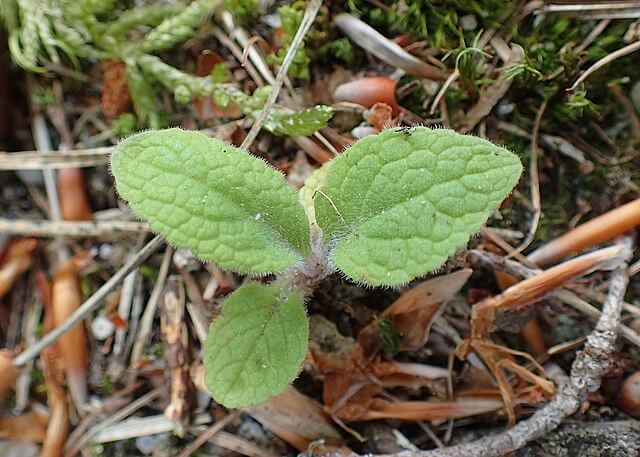

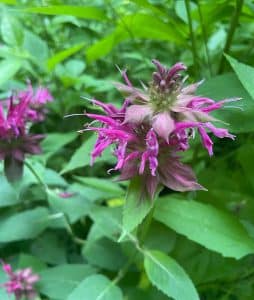
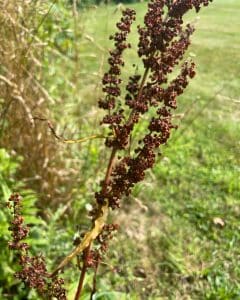



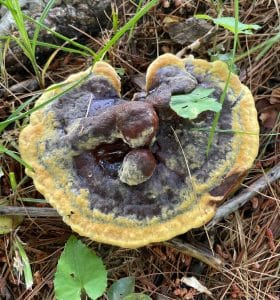
5 Responses
Good article. I am interested in wild edibles in Central Texas and Southern Maine.
Great article. I am interested in wild edibles in Wisconsin.
Glad I found this site. I’m from big cities now living in the country. Interested in identifying what grows here.
Very informative article. Mother nature is an amazing thing!!
My backyard is ablaze with these wild plants. I have to revisit every so often to refresh or jog my memory. The ones in my back yard have flowered and are in mid to late stage as they do flower early, in spite cooler weather. What is noticeable is the -lavender/light purple leaf tops. The down turn leaves stem, and the squarish stalks. I need to do a little more research though as there are similar plants that are are harmful even if processed and eaten.